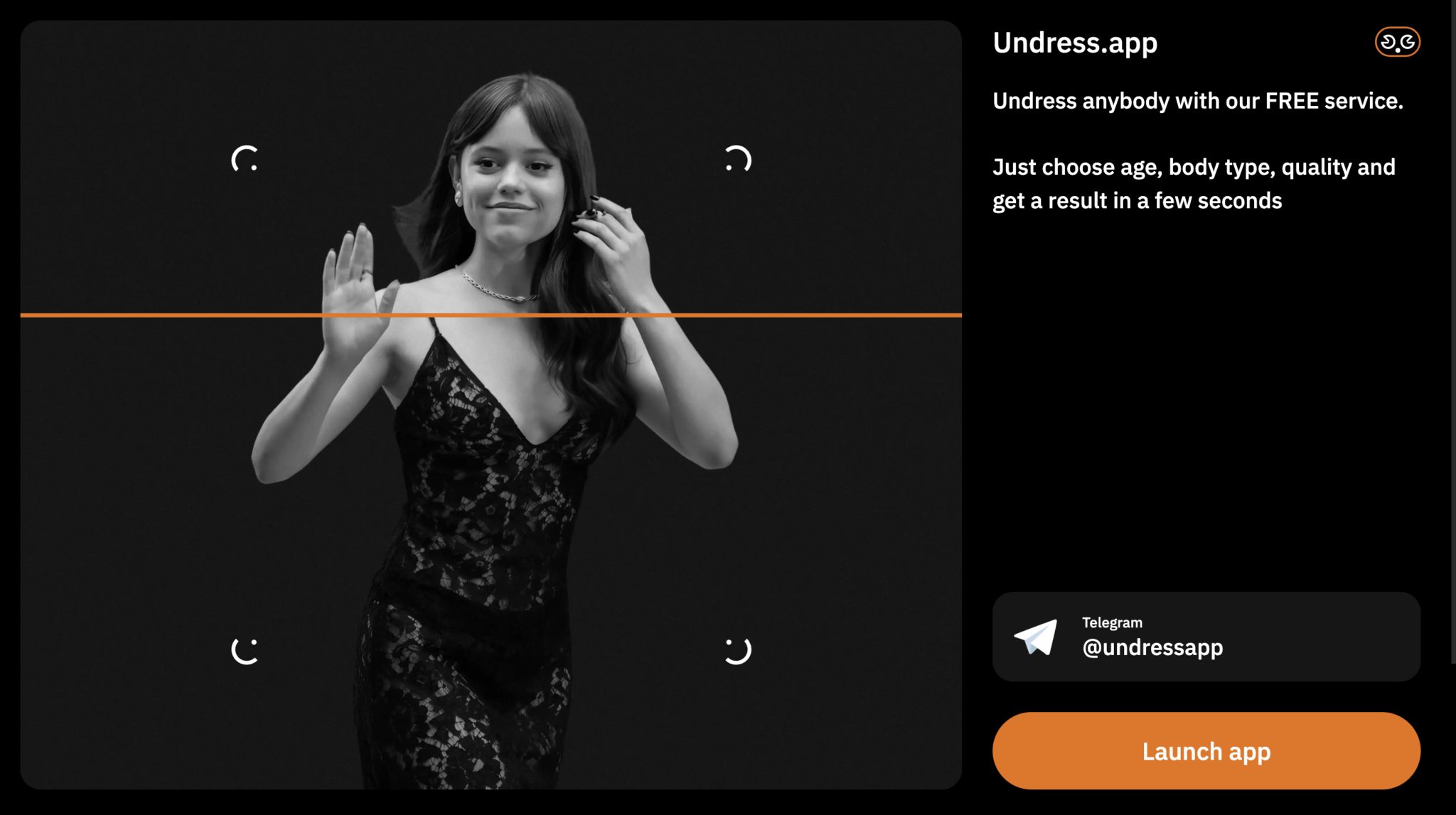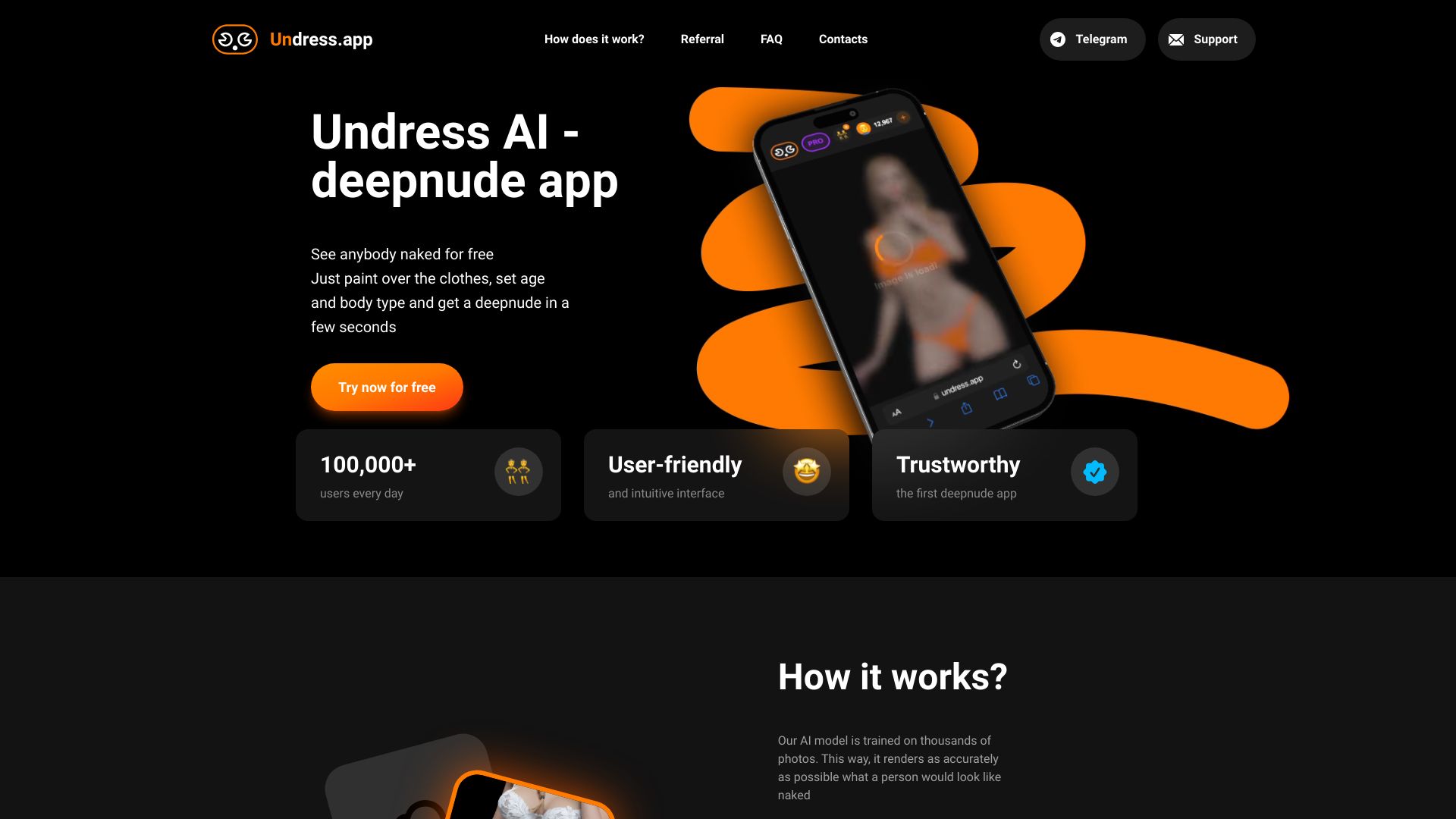Picture this: a piece of software that can digitally undress someone with just a click. Sounds like something out of a sci-fi movie, right? Well, welcome to 2023, where AI undressing apps have turned fiction into reality. These apps, powered by artificial intelligence, are sparking heated debates worldwide. Are they a groundbreaking innovation or a dangerous invasion of privacy? Let’s dive deep into this controversial topic and uncover the truth behind AI undressing apps.
The world of technology is evolving faster than ever, and AI undressing apps are just one example of how far we’ve come. But with great power comes great responsibility—and that’s exactly what’s missing here. These apps raise serious ethical concerns, and it’s high time we had an honest conversation about their implications.
Before we jump into the nitty-gritty, let’s set the stage. AI undressing apps use advanced machine learning algorithms to remove clothing from images or videos. While the technology itself is impressive, the potential misuse is alarming. In this article, we’ll explore everything you need to know about these apps, from how they work to why they’re controversial. So, buckle up because this ride is going to be wild!
Here’s a quick roadmap of what we’ll cover:
- What Are AI Undressing Apps?
- How Do These Apps Work?
- The Ethical Dilemmas Surrounding AI Undressing Technology
- Legal Implications and Privacy Concerns
- Real-World Examples of Misuse
- Alternatives and Positive Use Cases
- What the Experts Say
- How to Protect Yourself in the Age of AI
- The Future of AI and Privacy
- Final Thoughts and Actionable Tips
What Are AI Undressing Apps?
Let’s start with the basics. AI undressing apps are software programs designed to digitally remove clothing from images or videos using artificial intelligence. The technology relies on deep learning models that analyze patterns in human anatomy to recreate realistic visuals. Sounds cool, right? Well, not so fast.
These apps aren’t just for fun—they’re a double-edged sword. On one hand, they showcase the incredible capabilities of AI. On the other, they pose serious risks to privacy and consent. Think about it: anyone can take a photo of someone and turn it into something completely inappropriate without their permission. Scary, huh?
- Discover Psychic Medium Dani Jo Intuitive Healer Mentor More
- Tristan Summers Age Wiki Career More Your Complete Guide
How They’ve Gained Popularity
AI undressing apps have gained traction thanks to the growing interest in AI-driven technologies. Social media platforms, forums, and even mainstream news outlets have played a role in amplifying their visibility. Some people see them as a novelty, while others view them as a threat. It’s like that one friend who thinks it’s hilarious to prank you but ends up crossing a line.
How Do These Apps Work?
Now, let’s get technical. AI undressing apps use neural networks to analyze and manipulate images. Here’s how it works in a nutshell:
- Data Collection: The app trains on vast datasets of human bodies, focusing on anatomy and clothing patterns.
- Pattern Recognition: Using machine learning, the app identifies key features like skin tone, body shape, and clothing texture.
- Image Reconstruction: The app then uses this data to generate a new image where the clothing is digitally removed.
It’s like giving a robot the ability to draw, but instead of crayons, it uses complex algorithms. The results can be eerily realistic, which is both impressive and unsettling.
The Ethical Dilemmas Surrounding AI Undressing Technology
Let’s talk ethics, baby. AI undressing apps raise some serious moral questions. Here are a few:
- Consent: Do people have the right to control how their images are used? Absolutely. But these apps make it easy to violate that right.
- Objectification: By reducing people to mere objects, these apps perpetuate harmful stereotypes and contribute to a culture of exploitation.
- Harassment: These apps can be weaponized for revenge porn, cyberbullying, and other forms of harassment. Not cool.
It’s like giving someone a loaded gun and saying, “Don’t worry, just don’t shoot anyone.” Spoiler alert: someone’s gonna get hurt.
Why Consent Matters
Consent is the foundation of any ethical relationship—whether it’s personal or digital. When someone uses an AI undressing app without the subject’s permission, they’re essentially stripping away their dignity. It’s not just about the image; it’s about the impact on the person’s mental and emotional well-being.
Legal Implications and Privacy Concerns
Now, let’s talk law. The legal landscape surrounding AI undressing apps is murky at best. While some countries have strict laws against non-consensual image manipulation, others are lagging behind. Here’s what you need to know:
- Revenge Porn Laws: In many places, distributing intimate images without consent is illegal. But what about creating them in the first place?
- Data Protection: Apps that collect and process personal data must comply with regulations like GDPR. But how do you regulate something as intangible as an AI-generated image?
- Cybercrime: Using AI undressing apps for malicious purposes can fall under cybercrime laws, but enforcement is often inconsistent.
It’s like trying to catch a fish with a net full of holes. The laws are there, but they’re not always effective.
Real-Life Consequences
The impact of AI undressing apps on real people is devastating. Victims often experience anxiety, depression, and even PTSD. It’s not just a harmless prank; it’s a violation of their humanity. And let’s not forget the broader societal implications. When we normalize this kind of behavior, we’re sending a dangerous message about respect and boundaries.
Real-World Examples of Misuse
Let’s look at some real-world cases where AI undressing apps have caused harm:
- Case Study 1: A college student had her image manipulated and shared on social media without her consent. The backlash from her peers was brutal, and she eventually dropped out of school.
- Case Study 2: A celebrity’s photo was altered and used in a viral meme. The damage to her reputation was significant, and she had to hire a team of lawyers to fight back.
- Case Study 3: A domestic violence survivor had her image used as part of a revenge porn campaign. The trauma she experienced was overwhelming, and it set back her recovery process.
These stories aren’t just numbers on a page; they’re real people dealing with real consequences. It’s time we take this issue seriously.
Alternatives and Positive Use Cases
Not all AI is bad, though. There are ways to use this technology for good. For example:
- Medical Imaging: AI can help doctors analyze X-rays and MRIs more accurately.
- Artistic Expression: Artists can use AI to create stunning visuals that push the boundaries of creativity.
- Education: AI tools can enhance learning experiences by providing interactive simulations.
It’s all about intent. When used responsibly, AI has the power to transform industries and improve lives. But when misused, it can do more harm than good.
Why Intent Matters
Intent is everything. If you’re using AI to help people, that’s awesome. But if you’re using it to hurt them, you’re part of the problem. It’s like a knife—it can be a useful tool or a deadly weapon, depending on how you use it.
What the Experts Say
So, what do the experts think about AI undressing apps? Here’s a snapshot:
- AI Researchers: Many researchers warn about the potential misuse of AI and advocate for stricter regulations.
- Legal Experts: Lawyers emphasize the need for updated laws to address the unique challenges posed by AI.
- Psychologists: Mental health professionals highlight the psychological impact of image manipulation on victims.
It’s not just about the tech; it’s about the people using it and the systems in place to protect them.
Key Takeaways from Expert Opinions
Experts agree on one thing: we need a balanced approach. Technology should serve humanity, not harm it. That means prioritizing ethics, accountability, and transparency in AI development.
How to Protect Yourself in the Age of AI
Now, let’s talk solutions. Here’s how you can protect yourself from the dangers of AI undressing apps:
- Be Cautious with Your Photos: Think twice before sharing personal images online.
- Use Strong Passwords: Protect your accounts with strong, unique passwords.
- Enable Two-Factor Authentication: Add an extra layer of security to your accounts.
- Report Misuse: If you encounter AI-generated content being used maliciously, report it to the platform.
It’s like building a fortress around your digital life. The stronger your defenses, the safer you’ll be.
The Future of AI and Privacy
Looking ahead, the relationship between AI and privacy will only become more complex. As technology advances, so do the risks. But there’s hope. With the right policies, education, and innovation, we can create a safer digital world.
Imagine a future where AI is used to enhance privacy instead of violating it. Where consent is the default, not the exception. It’s a lofty goal, but it’s not impossible.
What Can We Do?
We all have a role to play. Developers can prioritize ethics in their designs. Policymakers can create laws that reflect the realities of the digital age. And individuals can educate themselves and others about the risks and benefits of AI.
Final Thoughts and Actionable Tips
In conclusion, AI undressing apps are a powerful reminder of the dual nature of technology. They have the potential to be both a blessing and a curse. The key is how we choose to use them.
Here’s what you can do today:
- Stay informed about the latest developments in AI and privacy.
- Advocate for stronger laws and regulations.
- Support organizations working to protect digital rights.
- Spread awareness about the dangers of AI misuse.
Remember, the choices we make today will shape the world of tomorrow. Let’s make sure it’s a world we want to live in.
What are your thoughts on AI undressing apps? Share your opinions in the comments below and let’s keep the conversation going. Together, we can create a safer, more ethical digital future.
- Corbin Colby Childhood Career And Beyond Exclusive Insights
- Billy Cooper Pedal Steel Guitars More Shop Now


